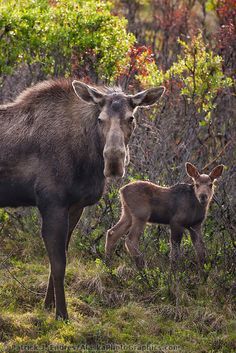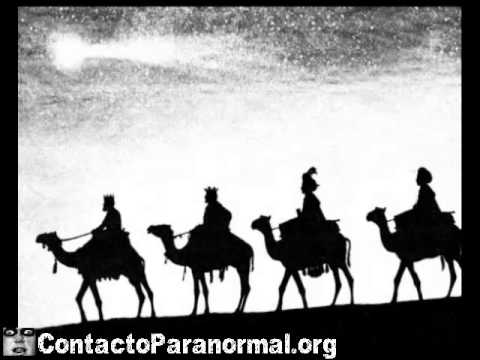Moose and the Mountain- a Memoir of an Old Man

I saw them, just behind some trees. Initially, they just appeared in dark uniform shapes. I first thought them to be a couple of guys in dark jackets loitering on the trail, but in the cool of the evening, day hikers are motivated to move quickly to camp or a trailhead, not to socialize on a trail.
That morning, however, Maine was warm and clear in mid-September. Despite working all night, I decided to take a day hike. Just two hours north of Bangor, where I was working, lies the northern terminus of The Appalachian Trail on Baxter Peak. Not particularly well reasoned, I had decided ‘to do something’ literally as I pulled out of the driveway from the hospital. I turned right instead of left.
I got to the trailhead about 11:30AM, rather late by climbing standards. I had been doing some tune up hikes after a long period of inactivity following major surgery. This would be my third. During the first hikes, I had gotten pretty well beat up. The body was flaccid and I winded easily. The last half of the each hike became a “death march,” a stumbling solitary tribulation where one abandons all hope of rest, food, or water just to make it to a stopping point. It took me days to recover. New England trails in general, and Katahdin trails in particular, known for their “natural” appeal, are not for the faint of heart. This is evidenced by the difficulty in determining that a trail exists at all. It takes a practiced eye to discern that a bare patch of rock in the midst of a vertical torrent of spring runoff is indeed a trail.
I decided that I would try the Helon Taylor trail which ends at the peak of Pamola about 300 ft. and a mile from the true top, Baxter at 5271 ft. This is a rise of about 3500 from the trailhead, a good stretch of altitude for a day hike. I had brought my good hiking boots and a small pack but I could not fit my hiking poles (an absolute necessity for bad knees) into my suitcase. Instead, I had jury-rigged a pair by buying replacement garden handles and fitting them with iridescent green nylon slings using a Prussic knot. Moving along rather better than I had during my last outing, I estimated that, given the fair weather, I could get to the peak and back to my car by about 7:30 PM when the light would fail.
I was wrong.
The trail, as is common in New England, moved at first through a jungle of rhododendron, oaks, maples, and Mountain laurel, making for walking that his close, humid, and claustrophobic. Other than scaring off some deer, and the occasional down hiker, I was alone. By a little after two, I emerged from the jungle to find before me a giant jumble of stone blocks, appearing to me as a nearly vertical wall. Each block was a puzzle of climbing, a gamble on safety over progress. Mantling up one rock after another, my arms burning and legs beginning to tap out the staccato of fatigue, nevertheless, I met and surpassed each puzzle. Climbing this last 1500 feet in about 90 minutes, I reached Pamola Peak and was greeted with a magnificent view of the whole Mount Baxter complex, a high plateau with a ridge of jagged peaks on its northwest rim. It was 4:00 PM and the September sun was just a finger’s breadth above the westernmost rim. Sundown comes early in the mountains.
I was elated. The body had responded, if not like a teenager, at least in a grudging and, at times, cooperative fashion. I knew that one day, the same body would fail to answer the call, leaving me a mere spectator or worse.
However, it was not today.
I found a hole out of the rising wind, put on a sweater, admired the scene, ate a celebratory half trail bar and sipped cold water like wine.
Those who do not climb miss the elation of this quiet interval of rest before the descent. It is by far the shortest interval of the day. Long hours, sweat, fatigue, pain and blood go into its quiet reverie. Yet it is an evanescent pleasure, flitting away, like smoke, into the clear sky.
“You can only take what the mountain gives.” Even as you rest, you know yourself to be the alien in a harsh foreign land. You are the visitor and the weakest creature there. You have yet to regain the safety of the Down. The worse is yet to be experienced in the coming to that safe haven of the Down. But, for an moment, you imagine you have a right to be there. For a shortest space of time, you have earned the privilege with the rock and wind, to watch the birds below you and to see day die in the mountains.
During my reverie, the wind had picked up.
Most people underestimate wind. The constant battle against the wind kills and injures many more than might be imagined. Poles and feet do not go where you try to place them. Overcompensation drains you. Missteps endanger you. Fatigue makes you take the wrong chances. Mere cool temperatures, in a brisk wind, threaten reason and even life with the danger of hypothermia. I estimated the wind was gusting up to 30miles per hour.
The trails down were all uniformly steep. A fall would have been unfortunate… and lonely; I passed the last hiker about an hour previously. The Helon trail, going down, was very exposed for about two miles before entering deep cover, too dark in the coming night to navigate without light.
If I had only known.
I therefore decided to go down the Dudley trail on the “back-side” (west) of Pamola, which would keep the light for a longer time. Once down, I could take a well-used trail, following a brook for the three miles and “one thousand foot descent” to my car. By following the brook, I hoped the light from the sky, even after sundown, show me the way, ensuring a quick passage and perhaps even a late dinner.
I was wrong.
If the Helon was steep, the Dudley was vertical: huge boulders with few hand or footholds (always worse in descent than ascent) marched down, one after the other. Just leaning over to study the trail gave the wind a chance to sweep me over the edge. By gambling on better light, I had won more wind. Hunkering down before placing a foot or pole, ofttimes I was compelled me to wait for a lull in the maelstrom before making a move. Despite a few near misses, a few falls that were not catastrophic and the growing fatigue of down climbing, nevertheless, I lost the 2000 feet I needed, getting below tree line with no real problems … except lost time.
I reached the trail connection at 6PM and, figuring that in the waning light I could still get out before 7:45 PM if I hurried. With no more than a wave to the other climbers bivouacked there, without stopping even to rest, I pushed on.
The first section of trail was reassuring, despite the “thousand foot descent” including a 200-foot ascent and then descent I had to make in and around a small lake, I was making progress. Nevertheless, now, I was worried. All thoughts of a late dinner in town were gone. Despite my fatigue, I tried to move faster, focusing my efforts on each handhold and foot placement, trying to avoid a fall in the growing gloom. I negotiated this unanticipated difficulty easily before starting down the ladder-like drop to the brook trail. This placed me with a vertical trail to my back, marshy jungle to my right, and a steep birch-covered slope to the brook to my left.
I still had the 1000 feet to lose

It was then that I glimpsed them. As I approached the supposed hikers to about 30 ft., I counted legs and realized that they were too numerous and skinny to be human: a moose cow and calf.
As it is generally acknowledged that moose cows with calves are a humorless bunch, much given to kicking anything that annoys them. They annoy easily. I backed up the trail and looked for a spot to duck into where she would be unable to do much damage. I found this ‘hidey-hole’ behind some downed paper-birch and small hemlocks.
Momma, of course, had figured out I was there and, other than glaring, ignored me. She had obviously taken my measure. Rather than leaving and going down trail, away from me, she advanced toward me, browsing all the way. Junior, himself, would eat a little then check in for a snack from mom, who was obviously trying to wean him. She would let him nurse noisily for a while, then grunt a few times and make him stop by moving off a few feet. Unfortunately, after the latest rebuff, Junior started browsing to the right and mom to the left with the trail between them. Any move by me to go down the trail would have moved me between Momma and Junior.
Momma and I started our dance.
Momma led. Never really getting off the trail, Momma waltzed me by back and forth across my line of retreat. I was losing the light. In the gloaming, she was already a 6ft at-the-shoulder, dark, forbidding mass, dimly highlighted against the somewhat lighter rock and blending inauspiciously into the black foliage. Even if I could have shifted her down the trail, it would mean following her at a distance and probably stumbling into her in the dark. Momma did not shift. Momma had other plans, and for the next thirty minutes, steadily grazed up the trail toward me, effectively moving me away from my hidey-hole and toward the nearly vertical ladder-like trail behind me.
Dancing with Momma, by now, had lost its attraction.
I tried to change things. Dressed in a short-sleeved t-shirt and light pants with well worn-in and excellent boots, I was wholly unprepared for bad weather. Besides my daypack and jury-rigged walking sticks, I had: 6 oz. of water, one and a half granola bars, a sweater, compass, altimeter, rain parka, a crude park map, insect repellant, and a match-safe with about a dozen rather elderly matches. Sacrificing distance, I ran back up the trail, placing me very near the almost-vertical trail back up to the marshy lake I had left an hour previously. Finding several fallen paper birches, I cleared a rock and laid a small fire, using up most of the matches in the process.
There would be no second fire.
Feeding the blaze with single strips of bark, I kept it small bright and smoky, destroying, of course, my night vision in the process. My only information on Momma and Junior now was sound and smell. I heard Momma and smelled her approach as she advanced on me. Just beyond the light of the fire, she stopped. I heard her pawing the ground and grunting in agitation, trying to gin up her enthusiasm for a final charge.
Momma blinked.
Abandoning the crusade and the bright pungent conundrum of a fire, she moved to my left, down toward the unseen creek, roiling noisily in the little valley.
It was not until I heard Junior stop in for a snack that I kicked the fire apart, grabbed my sticks and lit out down the trail in the dark. I fell, for the first of many times, after about seventy feet. On gaining my feet again, I looked back. No sound or huge moving darkness pursued me.
It was 8 PM and dark as pitch. I was on an unknown trail, unable to read a map, compass or altimeter. I could not consistently see the trail and then only as a slight decrease in the darkness compared to the brush and trees on either side. Remembering what I could of the trail, I knew it ran east, beside a brook, crossed at least one minor stream and veered south for a short distance to the car park. I knew that the massif of the mountain was due west and should be visible for a while. Near the end, a ridge would come up on my right, the ridge I had climbed that afternoon on the Helon.
A completely rational individual would hunker down until daylight. I could see, however, that the wind had kicked up strongly from the west and the sky was rapidly becoming cloudy, blowing flags of clouds up over the massif on the high altitude winds. A fast wind meant a rapid weather change and the clouds meant a change for the worse. Hypothermia, a cloud that had been no bigger than a man’s hand on the horizon of my well-being, now seemed to be a distinct career choice. It is the most common cause of death in the wilderness, frequent even in relatively moderate temperatures if the victim is wet and exposed. More concerning to me, I had to be back at work at 8 AM.
I had never heard of anyone walking out blind on such a trail before.
The first hour was the worst. I had to learn what to use as clues to the trail, how to use my poles as feelers and how to listen for a stream, feel the wind and smell the water. Each time I fell again, heavily. I lay there waiting for the pain to collect itself. After one such fall, estimating that I had really gotten into a gulch of some sort, I tried in the dark to find the trail by going in each direction. All directions went up hill. Where I had previously had some starlight, it was now cloudy. I finally tried to light one of my few remaining and unreliable matches. Surprisingly, it lit on the first strike … and promptly went out. I tried again and was able to make out that I was safely on the trail. Silt from winter deluges had so obscured the rocks that I had not seen them in the worsening darkness.
The only visual clues I would have for the remainder of the hike would be the slightly luminous sky compared to the pitch-black forest. I found that the best method was to look up to the sky for the telltale thinning of the canopy and use my poles to probe each hazard, feeling its dimensions before finding a safe spot to place a foot.
I crept on.
As I advanced I had no real belief that I was still on the trail. I could hardly expect a signpost would be visible and the trail was so rough that if I had gotten off onto a rockslide by mistake, I scarcely would have noticed the difference. After about an hour, however, I heard another brook sounding like a constant wind coming up on my right. I was initially worried that I would stumble into the stream unexpectedly; I slowed even more. I need not have worried. Out of the blackness loomed a pale shape, a footbridge. This was the first real indication that I could keep to the trail in the dark. It was 9:15 and I figured I had gone only about a 1000 yards since leaving Momma. Stopping at the bridge, I ate half of a granola bar, drank the last of my water, and lay on my back looking at the sky for a few precious minutes. I was not too tired; I was warm despite the sixty-degree wind. My bruises from the many falls had not disabled me. I was on the right trail. Hours still lay ahead. In spite of it all, this was my reason for walking in the wilderness: to marvel at the wondrous creation we have been allowed to inhabit. Throughout that night, I had the immediate sense of being in the palm of my Maker’s hand.
The next two and a half hours were much the same in one regard. I knew that I should keep the now reinforced brook on my left. As to whether the next step would bring me closer to safety or another hard fall, the question was very much in play. Each fall made it so much more difficult to rise again, jarring the senses, making me see stars. In a night filled with half-shadows seen out of the corner of the eye against abysmal black, these showers of light were the only colors I saw. Gut wrenching pain and the metallic taste of blood came again and again.
Still, I had to lose a lot of altitude, one step at a time. Some steps were huge drops into a black hole, the sticks too short to find a bottom.
I think I went seriously off the trail only once. As the Helon Trail ridge loomed up on my right, small streams flowed from it to the brook on my left, thinning the tree cover and opening up the trail to a flat water-soaked glade. The trail braided and scattered. I followed what I thought was the right trail only to have it dead-end. I retraced my steps several times and could find no way out. At this point I nearly stopped for the night., 10:30 with no end in sight. Finally, for reasons that probably had more to do with my several character defects than any woodcraft, I just took a bearing east from the barely visible skyline and walked … right through an unseen stream … water came up over my boot-tops. Ignoring that, I continued up the far bank and about 20 feet more before running into brambles in the gloom. Extricating most of myself from that, I worked north around it another 10 feet east, before sidling toward the noise of the stream. Eventually, I dropped into a small open area with boulders in it, the feel of gravel between the boulders and no overhanging branches: my working definition of a trail.
Within minutes, the trail here became flatter and thus less predictable. For the first time I noticed that the faithful and now-comforting sound of the brrook was falling away from my left. I came to an unexpected and abrupt turn to the right, south. For the last several hours, east had been the direction of travel, the mental compass of the Down, home, and safety. I hesitated. The loom of a dark trail in this unexpected direction scared me. I retraced my steps and tried to find some trail going east. To my mounting fear, I failed. Suspicious of this new trail, I decided to take it ‘for a bit’ to see what it was. Step after step was made into abysmal blackness; I could see no distance skylight now. No thinning of the foliage overhead assured me. Something loomed ahead, a somehow darker mass and promise of an possible opening beyond. I continued until it came to a darkened shape. It was not until I stumbled to the porch that I realized it to be the ranger station from which I had started.
I was back. I had an informal thanksgiving at the car, drove back in what became a driving rainstorm, ate some crackers, drank some water, showered and went to bed at 2 AM.
After all, I had to be back at work by 8AM.
‹ Back







